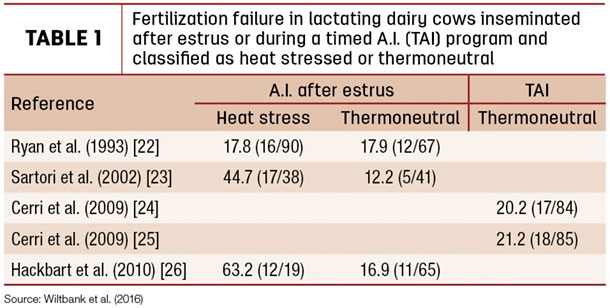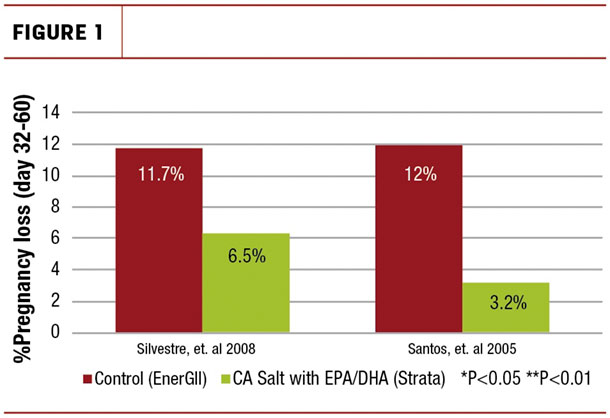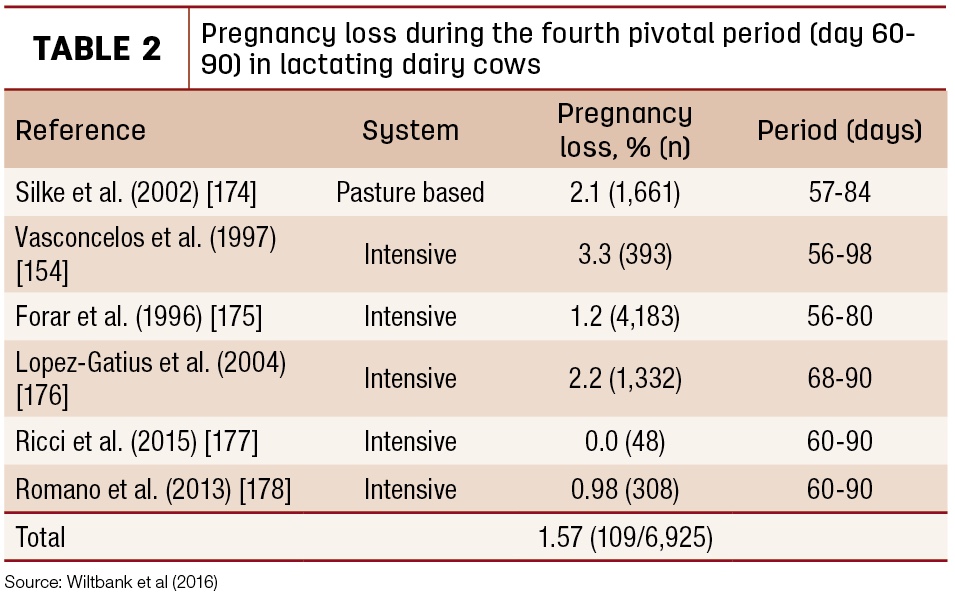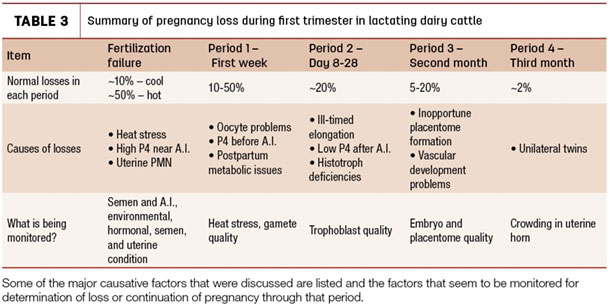While achieving a 20% pregnancy rate was at one time the goal, today’s herds are striving for so much more and achieving great reproduction through improvements in genetics, sync programs, on-farm management and by elevating the plane of nutrition.
While today a pregnancy rate of 25% or better and conception rates over 40% are considered good, are there still gains to be made? Let’s explore the importance of the first trimester and see where there are opportunities to continue to improve pregnancy outcomes.
The typical gestation of a dairy cow is approximately nine months and is composed of three trimesters. A simple high-level overview of the steps that occur before a cow is checked pregnant are:
- Once a cow meets her voluntary waiting period (VWP), she is inseminated when she expresses estrus or is enrolled in a timed A.I. program (TAI).
- At 21 plus or minus three days, the cow will either come back into heat if the egg has not been fertilized or if the fertilized egg does not implant.
- If she does not express estrus, she is then checked for pregnancy at 28 to 32 days following insemination.
- Lastly, around day 60, the cow is rechecked for pregnancy.
However, the first trimester is much more complicated and important in achieving a pregnancy. Research from the University of Guelph in 2018 reported that 83% of all eggs are actually fertilized, but only 67% are viable by day six. In this report, 39% of the viable embryos failed to materialize into a pregnancy by day 28. While the losses are great, this still results in a respectable 41% conception rate. However, a staggering 51% (more than half) of all fertilized eggs fail to result in a pregnancy. We need to ask the question: How does this happen, and can we prevent these tremendous losses?
In 2016, an excellent review was published that discussed the “pivotal periods” for pregnancy loss during the first trimester of gestation in lactating dairy cows. These researchers described the four pivotal periods and the potential causes for pregnancy failure. The four pivotal periods and time frames are:
- First pivotal period: Breeding to day seven
- Second pivotal period: Day eight to day 27
- Third pivotal period: Day 28 to day 60
- Fourth pivotal period: Third month of pregnancy
First pivotal period
The first pivotal period involves the lack of fertilization of the egg or the death of the early embryo. It is a major contributor to pregnancy loss, particularly under specific insults such as heat stress and severe negative energy balance. In high-producing cows, pregnancy loss during this week of gestation ranges from 20% to 50%. In the research done in 2018, the pregnancy loss during this first period was at 17%.
Table 1 depicts the level of fertilization failure in lactating cows inseminated after estrus or TAI under heat stress and thermoneutral conditions.

You can see the cows that were under heat-stressed conditions recorded higher rates of fertilization failure compared to cows in thermoneutral conditions.
Second pivotal period
During the second pivotal period, the losses average 30% with a wide range of 25% to 41% between farms. Period 2 consists of two stages: The first stage is embryo elongation, and the second stage is maternal recognition of pregnancy, maintenance of the corpus luteum (CL) and initial recognition of pregnancy.
Elongation is the process where the conceptus dramatically increases in size. A key regulator of embryo elongation is interferon tau (IFN-t). The authors stated timely elongation of the embryonic trophoblast and exposure of endometrial cells to IFN-t are crucial for the continuation of pregnancy during this second pivotal period. In addition, pregnancy loss during this time coincides with a decrease in circulating levels of progesterone (P4).
Pregnancy is established and maintained because of a series of intricate interactions between the embryo and the cow’s reproductive tract. The lifespan of the CL in cattle is controlled by the release of PGF2-alpha from the uterus. A successful pregnancy involves enough secretion of IFN-t by the conceptus to inhibit secretion of PGF2-alpha. This allows for the CL to be maintained. Larger embryos produce a stronger IFN-t signal to block PGF2-alpha, thus allowing the CL to stay and pregnancy to be maintained.
Embryonic loss peaks between days seven and 16 after insemination. During this period, for the uterus to support conceptus growth and implantation, it must develop receptivity in response to ovarian progesterone.
Both IFN-t and progesterone levels are supported by supplementing diets with EPA/DHA omega-3s. In 2006, researchers reported higher endometrial progesterone mRNA in cows supplemented with EPA/DHA and was directly correlated to higher fertility.
Third pivotal period
The third pivotal period, or the second month of pregnancy, is the time where abortions are recorded. Based on 20,000 pregnancies in high-producing cows, the average loss is approximately 12%, which aligns with the values reported in 2018. Figure 1 shows the results from two studies where cows supplemented with EPA/DHA recorded far lower pregnancy loss levels compared to the control results at 12% loss.

In these trials, the diets were iso-energetic and iso-lipidic; therefore, the reduction in embryo loss was not related to energy but the inclusion of the omega-3s.
Fourth pivotal period
The fourth pivotal period, which is the third month of pregnancy, has reduced pregnancy losses (about 2%) compared with the first three periods. This period can be elevated in some cows, however, particularly in those carrying twins in the same uterine horn. Table 2 from 2016 summarizes six studies that measured pregnancy loss during the second month of pregnancy, and the average was 1.57%.

A summary of pregnancy loss in the first trimester is shown in Table 3. The range of losses and the potential causes are listed for each respective pivotal period.

Insults like heat stress and infections can lead to higher rates of low reproductive function. Management, metabolic issues, housing and nutrition are all factors in minimizing embryo loss. We assume a 40+% conception rate is excellent, but after reviewing these pivotal periods, it would seem a 51% loss in fertilized eggs is not acceptable and we can strive to do better to improve our reproductive program and the dairy farm’s bottom line.







